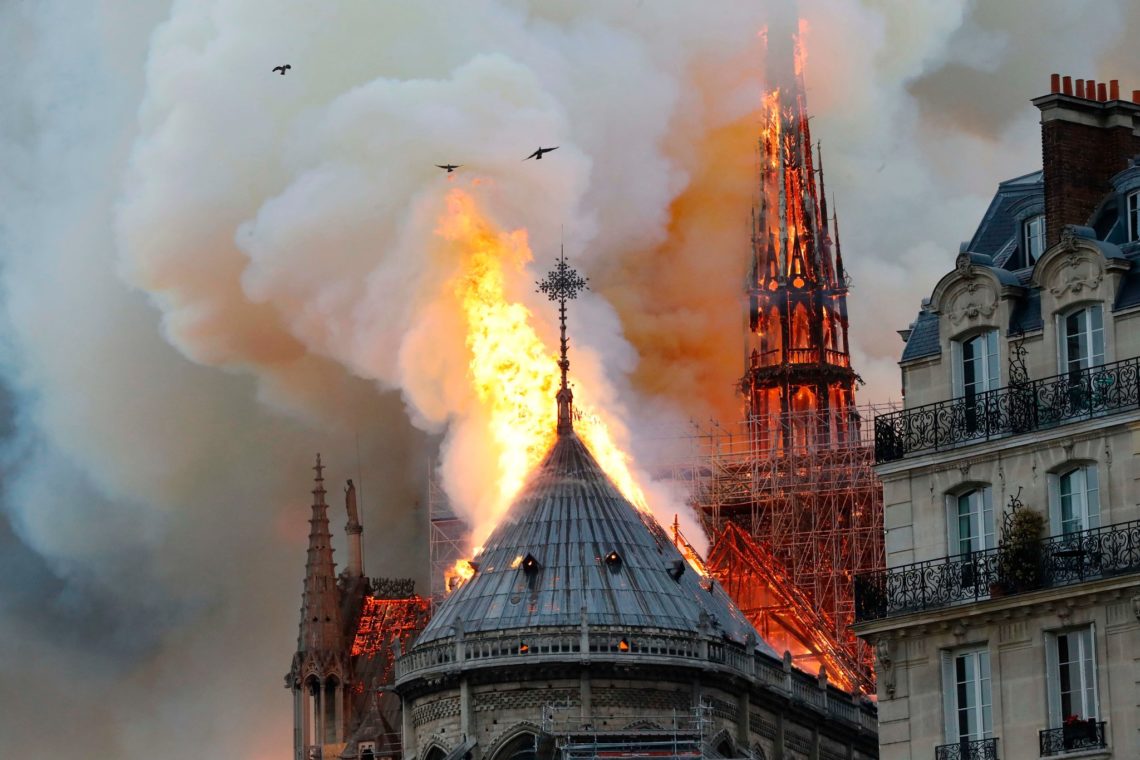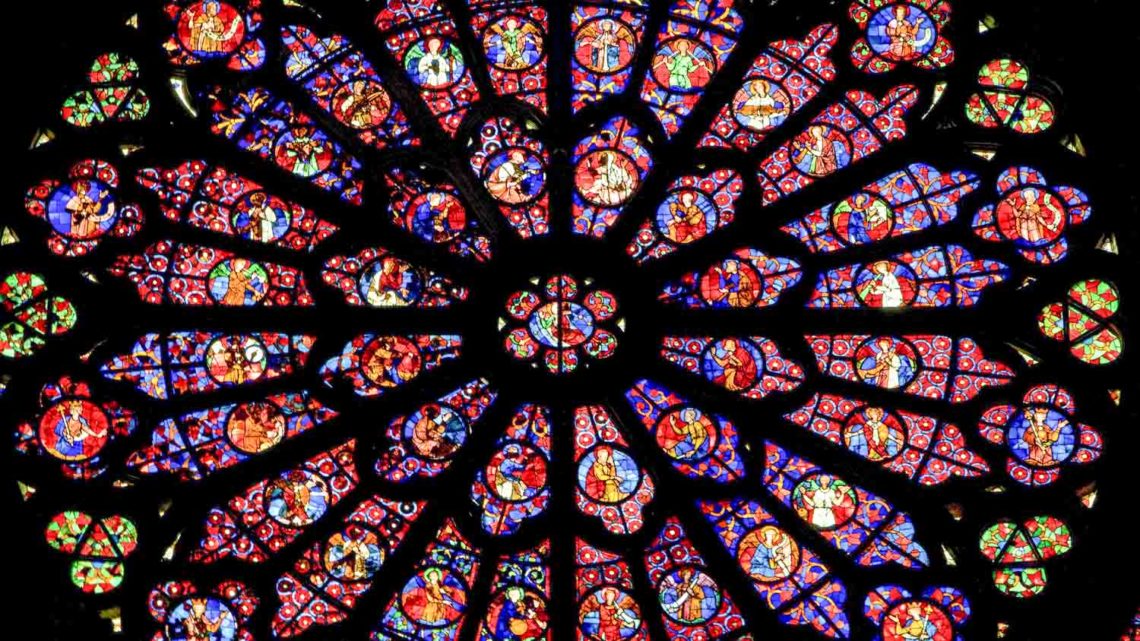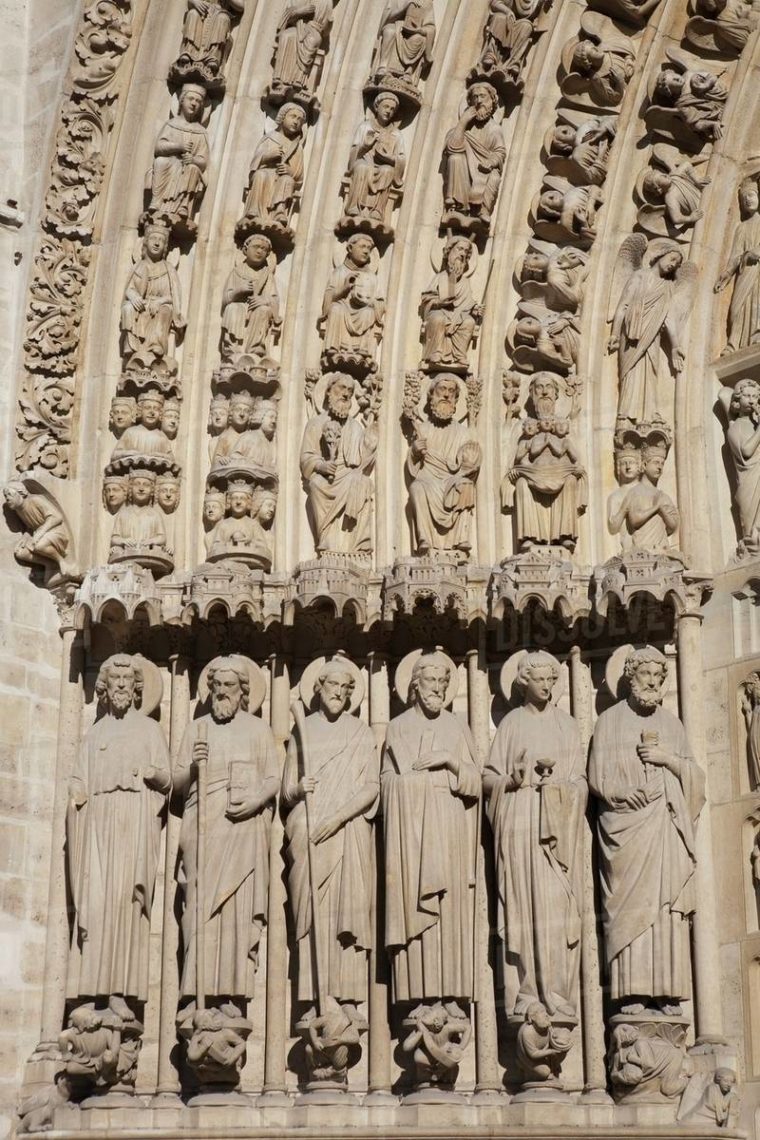The New York Times is how “headline news” inadvertently gets my attention, normally by an accidental, momentary glance. Yesterday, the glance felt more like a bullet ripping through my abdomen, with my eyes uncontrollably frozen to an image of the Notre-Dame in flames. My first thought – Terrorism. Second thought – I will fight to the death to end those crazy fucks from destroying our world. Third thought – You are crazy, overreacting, and don’t believe in violence. Forth thought-Sad!

Shortly, it was announced that it was an “accident.” I felt haunted the entire day. Why? Why did the destruction of a church in France cause such an impact in my feelings? Would I feel the same way if my childhood Catholic Church, St. Michael’s in Houston, burned in flames? NO!
I suppose the mere Herculean effort of constructing such a beautiful building deserves our attention, and respect. But something more important is at play within me. To fully appreciate my conclusive thoughts, we have to take a peek at the cathedral’s history.
Prior to the Crusades of 1096, Paris would have had several key buildings constructed in the Gallo-Roman style. In fact, on the very spot of the present Notre-Dame once stood a temple dedicated to Jupiter (the highest God in the pantheon).
Then Pope Urban II called for a crusade to aid the Byzantines (Christians), against the Turks (Muslims), to recover Jerusalem, and the Holy Land.
At that time, the Arabs and Turks were far more erudite than the European invaders, and the crusaders returned back to Europe enriched by the spoils of their crusades: new mathematics (including Arabic figures 0-9), Algebra, chemistry, irrigation, gunpowder, the magnetic compass, the catapult, water wheels, water clocks, round towers, pointed arches, windmills, alchemy, pointed arches, new musical instruments, exotic foods and spices, and the color scarlet.
It was this importation of math and science, from their “enemies” that gave Europeans the knowledge to innovate the Roman building methods to allow for the rib vault, the flying buttress, and for greater height and more space for windows. St. Augustine wrote that light is the most direct manifestation of God, and the new approach to building allowed for much larger windows, with elaborate stained glass and rose windows to flood natural light into the interior sanctuary.

From 1050 to 1350 more stone was quarried in France alone than in the whole history of ancient Egypt—enough to build 80 cathedrals, 500 large churches, and tens of thousands of parish churches. The great building campaign of medieval times has been called the “cathedral crusade.”
And so it was, that the Notre-Dame stood proudly in arguably one of the greatest cities in the world, a symbol of God’s love, a monument of beauty and strength, bearing witness to man’s folly for almost 700 years, in the face of war, famine, human tragedy and triumphant success, a mega-monolith of meaning and importance: subject to man’s ignorance and shortcomings.
In 1793,during the French Revolution, the cathedral was rededicated to the Cult of Reason, and then to the Cult of the Supreme Being. During this time, many of the treasures of the cathedral were either destroyed or plundered. The twenty-eight statues of biblical kings located at the west façade, mistaken for statues of French kings, were beheaded.
Sadly, the cathedral came to be used as a warehouse for the storage of food and other non-religious purposes.
The cathedral was functioning in the early 19th century, but was half-ruined inside and battered throughout. In 1831, the novel Notre-Dame de Paris by Victor Hugo, published in English as The Hunchback of Notre-Dame had an enormous success, and brought the cathedral new attention.

“He therefore turned to mankind only with regret. His cathedral was enough for him. It was peopled with marble figures of kings, saints and bishops who at least did not laugh in his face and looked at him with only tranquility and benevolence. The other statues, those of monsters and demons, had no hatred for him – he resembled them too closely for that. It was rather the rest of mankind that they jeered at…”
― Victor Hugo, The Hunchback of Notre-Dame
In 1963, on the initiative of culture minister André Malraux and to mark the 800th anniversary of the Cathedral, the facade was cleaned of the centuries of soot and grime, restoring it to its original off-white color.
So, that is a snapshot of “Our Lady’s” story. To find my peace, I consider that perhaps she burned yesterday to remind us that conquering other cultures and peoples will never bring us peace. We can’t find our home with God in any one place on earth, or any one building, nor does any one religion own the exclusivity of God. It must be found deeply within our own hearts. A love that lives—ad infinitum— for all humans.